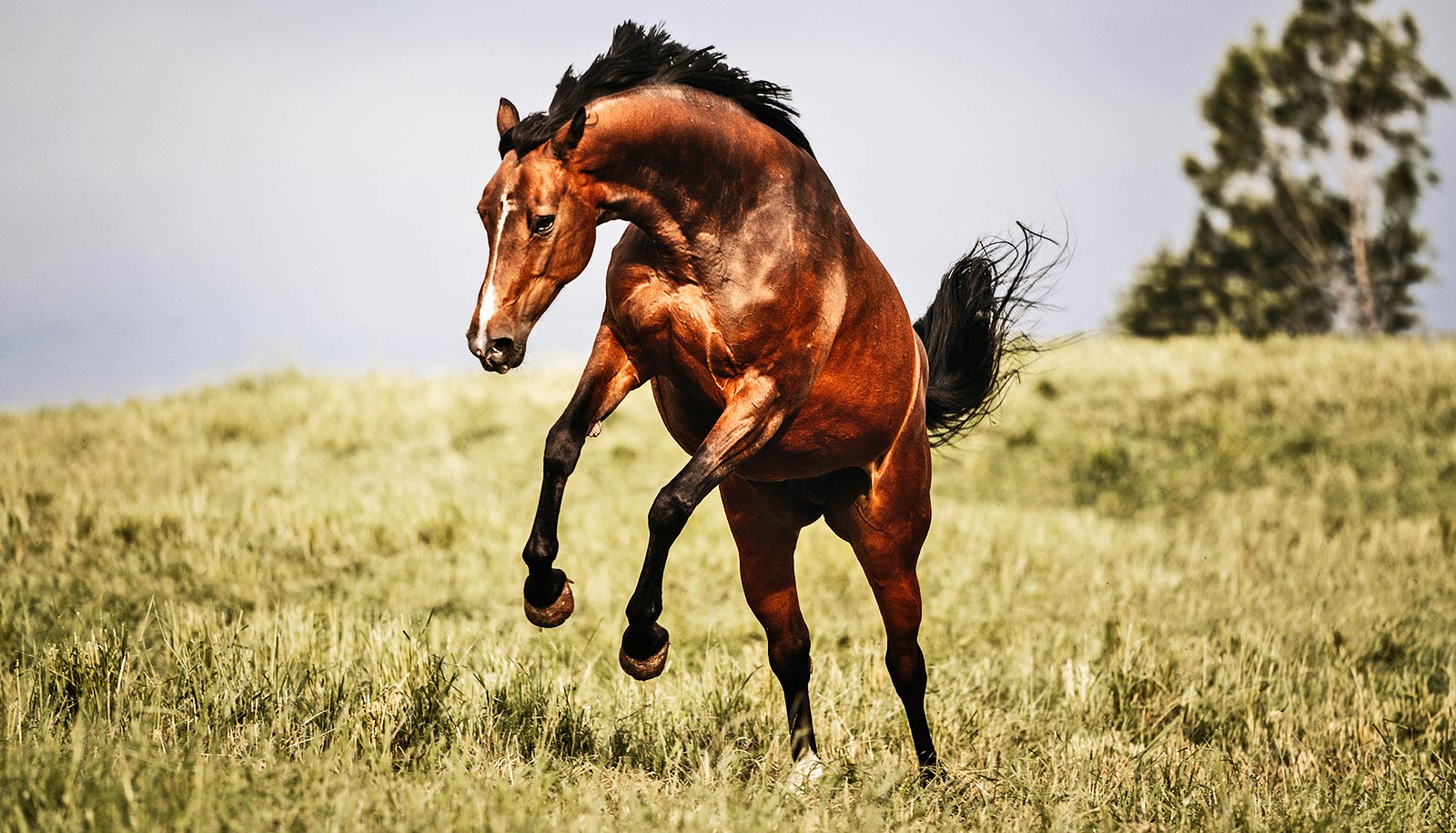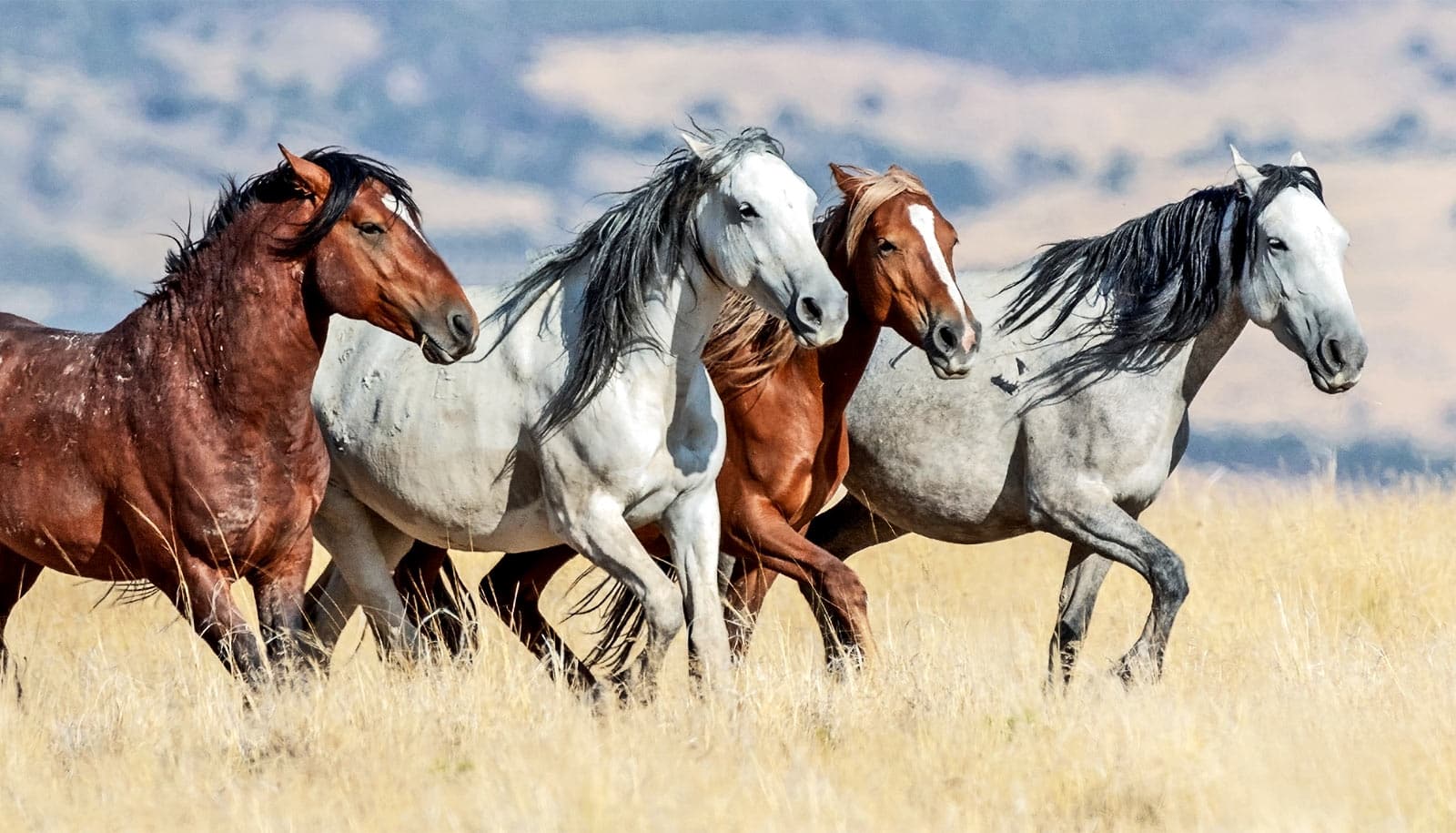Researchers are working to identify the genes that influence horses’ tendency to get spooked.
In the wild, horses must be alert for predators that might attack them. This means that even domesticated horses are hardwired to be aware of danger and can scare easily.
Unfortunately, this so-called “startle response” or “spooking” is reflexive, and horses often cannot distinguish between the danger a Florida panther might present versus a plastic bag floating by a riding arena.
Some horses react to these perceived threats by rearing, bolting, or bucking, which can create dangerous situations for owners and riders.
The new research is in the journal Genes. Identifying the genetic traits related to startle responses would be a first step toward one day selecting or breeding horses for the temperament types we prefer. These research results might be a decade away.
Samantha Brooks, an associate professor of equine genetics at the University of Florida Institute of Food and Agricultural Sciences (UF/IFAS), and her team ran an experiment on several groups of young horses that are part of the UF/IFAS breeding program that helps understand startle responses.
The horses wear wireless heart-rate monitors and are loose in a round pen. At set intervals, an umbrella is opened quickly within the animals’ line of sight. The team analyzed the animals’ behavior and change in heart rate throughout and after the initial startle reaction.
“We can’t read their minds,” says Brooks. “Their heart rate tells us what is going on inside that we cannot see from reading their body language alone. It was interesting to see the stories their heart rates told us.”
Two clear groups of horses emerged from the data. The first group of horses were startled by the umbrella opening, had a spike in heart rate, and maintained a reactive or hyper-alert state including more time spent looking and moving away from the umbrella.
The second group startled much like the first group to the umbrella opening, but with a different outcome. The horses experienced a spike in heart rate but then calmed quickly and carried on with their day. These animals perceived the stimulus and found it startling but did not to go through the behavioral patterns of avoidance, fear, etc. like the first group.
“Horses have adapted over thousands of years to live with people,” Brooks says. “Some of those changes include a reduction in startle response and are really helpful to better understand the horses we work with today.”
Now that two clear groups have emerged, the team will take this information and develop a study to differentiate the genetic components that make up how spooked horses react to fear. The researchers took blood and hair samples from each horse in the study for future analysis.
Knowing how genetics weigh into behavior can help horses and owners find their right fit. Perhaps the spooky horse is not the best option for a 10-year-old 4-Her. But a spookier, high-strung horse might be a better fit for a high-energy “job” like show jumping.
“Understanding each horse’s genetic makeup will help you understand the type of animal you need,” says Brooks. “If we learn early on what this animal’s natural tendencies are most likely to be, we can make educated decisions on training and future careers to give the horse the best shot to grow into their potential, rather than becoming a problem or danger.”
Additionally, understanding a horse’s reaction to uncomfortable situations can make a difference in how they are handled for medical procedures, transportation, and more.
“It’s important to know these traits because it can impact how we care for horses overall,” says Barclay Powell, a PhD student working on the project. “This will be hugely important to the veterinary field as well. It’s not only helpful for the people handling the animals, but also for the horses’ welfare.”
“It doesn’t matter if the horse is a racehorse, therapy animal, or driving a carriage, an unplanned startle response is generally a problem,” says Brooks. “We are just beginning to scratch the surface of this. It might take us 10 years or more to really have a clear understanding, but it is worth the effort.”
The National Institute of Food and Agriculture funded the project.
Source: University of Florida

